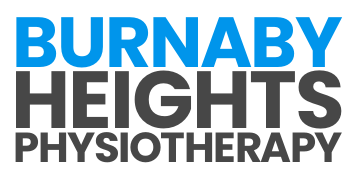Burnaby Heights Physiotherapy offers leading-edge treatment for De Quervain’s tenosynovitis. Our expert physiotherapists provide personalized care, focusing on pain relief, function restoration, and prevention of recurrence in a supportive and compassionate environment.
Understanding De Quervain’s Tenosynovitis in Depth
De Quervain’s tenosynovitis manifests as painful inflammation of the two tendons that extend to the thumb and run along the wrist. This condition is particularly notable for the thickening of the tendon sheath, leading to restricted tendon movement, pain, and swelling in the wrist near the base of the thumb. Over time, this can cause difficulty in performing simple tasks that involve gripping or pinching.
Causes and Contributing Factors:
- Repetitive Strain: Frequent, repetitive hand or wrist movements can irritate or cause swelling in the tendon sheath.
- Direct Injury: Sudden trauma or injury to the wrist can lead to inflammation.
- Health Conditions: Pre-existing conditions like rheumatoid arthritis may increase the risk.
- Pregnancy and Hormonal Changes: These can cause fluid retention and changes in body tissues, contributing to the condition.
Symptoms to Watch For:
- Pain and Tenderness: Pain on the thumb side of the wrist, exacerbated by thumb movement or when forming a fist.
- Swelling: Noticeable swelling can occur over the thumb side of the wrist, accompanied by a fluid-filled cyst in some cases.
- Limited Motion: Difficulty moving the thumb and wrist, particularly when trying to grasp or pinch.
- “Catching” Sensation: The feeling of the thumb sticking or catching when trying to move it.
Our Physiotherapy-Led Approach to Treatment
At Burnaby Heights Physiotherapy, our physiotherapy approach is at the forefront of treating De Quervain’s tenosynovitis in Burnaby, focusing on:
Personalized Hand Therapy
- Strengthening and Stretching Exercises: Tailored exercises to improve strength and flexibility in the wrist and thumb, enhancing movement and reducing stiffness.
- Manual Therapy: Hands-on techniques to mobilize the joints and soft tissues, alleviating pain and improving function.
Comprehensive Support
- Pain Management: Gentle movements and other strategies to manage acute symptoms effectively.
- Lifestyle Modifications: Recommendations to adapt your daily routines in ways that support recovery and prevent recurrence.
- Ergonomic and Activity Modification: Advice to modify daily activities and work environments to reduce strain on your wrist, helping prevent further irritation or injury.
Comprehensive Treatment Services
At Burnaby Heights Physiotherapy, our commitment to your health extends well beyond just physiotherapy. We pride ourselves on offering a wide array of services designed to cater to all your rehabilitation needs.
- Physiotherapist
- Acupuncture
- Registered Massage Therapy
- Hand Therapy
- IMS Therapy
- Shockwave Treatment
- Concussion Rehabilitation
- Vestibular Rehabilitation Physiotherapy
Why Choose Burnaby Heights Physiotherapy for Your De Quervain’s Tenosynovitis Treatment
Opting for Burnaby Heights Physiotherapy in Burnaby for your treatment means choosing:
- Expertise in Hand Therapy: Our physiotherapists are experienced in addressing hand and wrist conditions with cutting-edge, evidence-based techniques.
- Tailored Care Plans: Understanding that every case is unique, we provide customized treatment plans focused on your specific needs and recovery goals.
- Holistic Treatment and Support: Beyond physiotherapy, we offer guidance on overall well-being to enhance your recovery and well-being.
Leave Pain In Your Rearview
If De Quervain’s tenosynovitis is impacting your daily life, turn to Burnaby Heights Physiotherapy in Burnaby for professional care and support. Reach out today to explore our treatment options and take the first step towards regaining comfort and functionality in your hand. Your path to recovery begins here.
Wrist and Hand Conditions We Treat
|
|
De Quervain’s Tenosynovitis Treatment Burnaby FAQs
Are There Any Exercises I Should Avoid With De Quervain’s Tenosynovitis?
When dealing with De Quervain’s tenosynovitis, it’s important to avoid activities and exercises that exacerbate the condition. Specifically, activities that involve repetitive thumb movements, forceful gripping, or wrist twisting can increase irritation and inflammation of the affected tendons. Your physiotherapist will guide you on safe exercises and may recommend temporary restrictions on certain activities to allow the tendons to heal. Following a tailored exercise regimen and making the necessary modifications to daily activities are key steps in the recovery process.
Can De Quervain’s Tenosynovitis Go Away Without Treatment?
While mild cases of De Quervain’s tenosynovitis may see some improvement with rest and activity modification, untreated, the condition can lead to worsening symptoms, decreased mobility, and chronic pain. Physiotherapy plays a crucial role in treating and managing the condition by reducing inflammation, improving tendon function, and preventing recurrence. Techniques such as targeted exercises, manual therapy, and splinting are often recommended to alleviate symptoms and promote recovery.
Can De Quervain’s Tenosynovitis Recur After Treatment?
Yes, De Quervain’s tenosynovitis can recur after treatment, especially if the factors contributing to the condition, such as repetitive wrist and thumb movements, are not adequately addressed. Ongoing physiotherapy and adherence to ergonomic adjustments and exercise regimens are essential in minimizing the risk of recurrence. It’s also important to recognize the early signs of the condition and seek prompt treatment to prevent worsening symptoms. A holistic approach, including physiotherapy, lifestyle modifications, and ergonomic interventions, is key to managing symptoms and reducing the likelihood of recurrence.
Is It Possible to Prevent De Quervain’s Tenosynovitis?
While it may not be possible to prevent De Quervain’s tenosynovitis entirely, especially for individuals with certain risk factors, adopting preventive measures can significantly reduce the risk. These measures include practicing good ergonomic habits to minimize wrist and thumb strain, performing exercises to strengthen the wrist and improve flexibility, and avoiding repetitive motions that could irritate the tendons. Additionally, being mindful of wrist position during daily activities and seeking early intervention at the first signs of wrist pain or discomfort can help prevent the condition from developing or worsening.
Burnaby Heights Physiotherapy
3970 Hastings St #210, Burnaby, BC V5C 6C1, Canada
604 – 294 – 3911
Hours:
Monday to Friday: 7:00 AM – 8 PM
Saturday: 7:00 AM – 2:00 PM
Sunday: Closed


